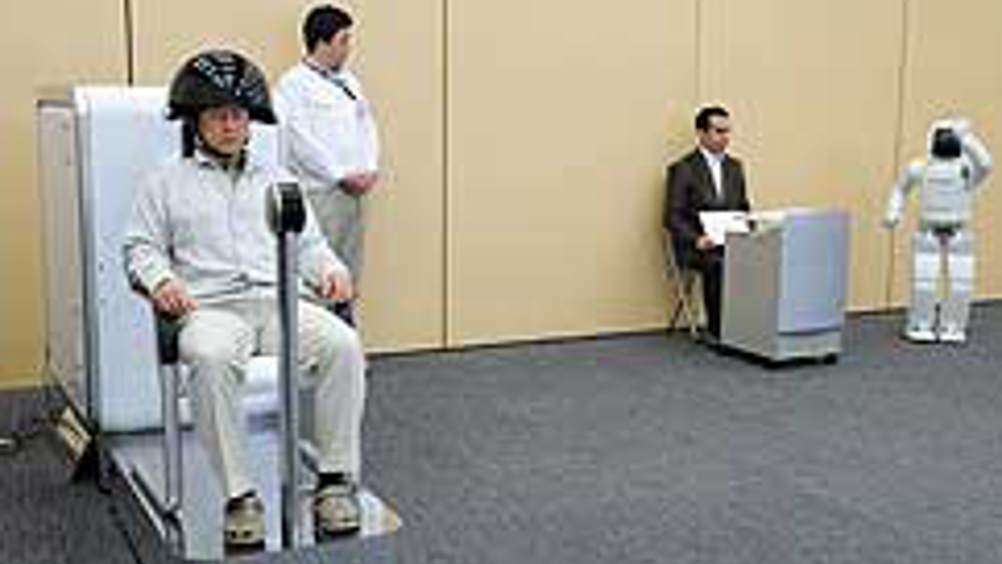Brain power
Japanese researchers claim they have developed a system that can allow a user to control a robot by thought alone.

Researchers at the Honda Research Institute, the Advanced Telecommunications Research Institute International (ATR) and the Shimadzu Corporation have developed a system that can allow a user to control a robot by thought alone.
The system makes use of the fact that, during the human thought process, changes in electrical current and blood flow occur in the brain.
To control the robot, the user wears a helmet equipped with electroencephalographic (EEG) sensors, which measure the changes in the electrical potential on the scalp, as well as near-infrared spectroscopy (NIRS) sensors, which measure the changes in cerebral blood flow.
Once the data is acquired, a computer performs a statistical analysis on it to determine the thoughts of the user.
This information is then transmitted to the robot, which, in this case, is Honda’s ASIMO humanoid robot, which makes corresponding movements such as raising its arm or leg.
According to the companies, an accuracy rate of more than 90 per cent was achieved in the tests.
Register now to continue reading
Thanks for visiting The Engineer. You’ve now reached your monthly limit of news stories. Register for free to unlock unlimited access to all of our news coverage, as well as premium content including opinion, in-depth features and special reports.
Benefits of registering
-
In-depth insights and coverage of key emerging trends
-
Unrestricted access to special reports throughout the year
-
Daily technology news delivered straight to your inbox










UK Enters ‘Golden Age of Nuclear’
Anybody know why it takes from 2025 to mid 2030's to build a factory-made SMR, by RR? Ten years... has there been no demonstrator either? Do RR...